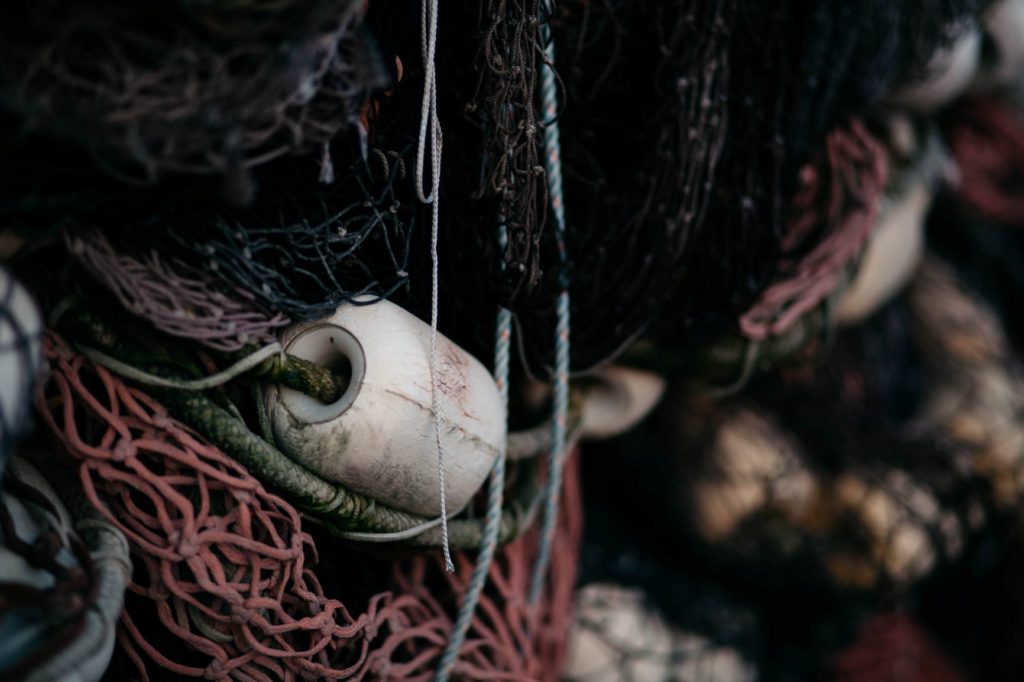
Oceans cover more than 70 percent of our planet’s surface and are home to 80 percent of life on earth. Fish, which provide 20 percent of daily protein intake to about 3.1 billion people, is among the most widely traded food commodities — at a value of USD 145 billion annually.
The significance of and demand for fishing pose a key problem. Almost one-third of marine fish stocks were fished at biologically unsustainable levels in 2013, leading to a decline of stock from 90 percent in 1974 to 68.6 percent in 2013. As a response, aquaculture and farm fishing have increased in popularity, but the unmanaged expansion has caused pollution and habitat degradation, leading to rising levels of carbon dioxide in the atmosphere, which in turn, contributes to ocean acidification.
The United Nations Sustainable Development Goals (SDGs), implemented to supersede the Millennium Development Goals (MDGs), include objectives to tackle the issue of depleting marine resources with SDG 14. The initiative aims to “conserve and sustainably use the oceans, seas and marine resources” of the world.
The challenge today is for corporations to fully embrace the concept that the ocean is an essential resource that needs to be carefully managed to support a sustainable future. The question that remains is how the global community should source fish in such a way that contributes to economic and business growth, without endangering the environment.
Three steps can promote sustainable fishing throughout the supply chain within the guidance of SDG 14.
Step One: Map the Supply Chain to Identify Sources of Risks.
Operating the supply chain in line with SDG 14 offers businesses many benefits. The goal aims to preserve the world’s oceans, ensure resources can be exploited sustainably, and fight poverty in the regions where fisheries and aquaculture are most common. Managing the supply chain in this way allows companies to reduce risks, secure resources and increase the positive impact of their activities. A supply chain risk assessment aligned with SDG 14 allows companies to know exactly where to focus efforts, making actions more effective.
Step Two: Set the Course of Action.
SDG 14 identifies the environmental and social aspects affecting oceans, and is an excellent starting point for structuring an action plan. Companies can endorse external initiatives that promote sustainability and the protection of oceans, such as the FAO’s Code of Conduct for Responsible Fisheries, the Global Aquaculture Alliance or the International Seafood Sustainability Foundation.
As indicated in SDG 14, protecting the oceans is a task that requires actions in several different areas. Promoting environmental best practices for aquaculture and fish farm suppliers is vital to ensure success at an environmental and business level. Research has shown that better environmental performance of farms can improve yield and economic results, which also translates into better living conditions and progress for local communities. If the supply chain relies on catching fish in open waters, then special attention must be paid to reduce the amount of by-catch, minimizing the impact on the natural environment and allowing oceans to maintain their natural balance.
Step Three: Get the Certification.
Finally, making the company’s commitment known is important for all stakeholders, especially for customers. Being certified is one way for companies to show they are taking full responsibility for sustainability. There are different schemes that verify and attest for responsible sourcing, such as the MSC Chain of Custody Standard certification or the ASMI Chain of Custody. Companies can also aim at obtaining eco-labels, such as France’s Label Rouge. Obtaining these certifications requires constant auditing, which helps companies ensure that the supply chain is well managed and sustainable, working towards the achievement of SDG 14.
Ocean plastic pollution is the theme of this year’s Earth Day and is a growing concern. There is still hope that our ocean will finally get the attention it deserves. Now is the time for companies, governments, and citizens to protect and improve the health of our seas and coastal areas by sustainably use the marine resources.
Find out more about how the UN’s SDGs bring positive change to global business and the importance of reporting.
by Vladimir Guzman
This article was originally published on SustainableBrands.com
About the Author
Follow on Twitter Follow on Linkedin Visit Website More Content by EcoVadis EN

